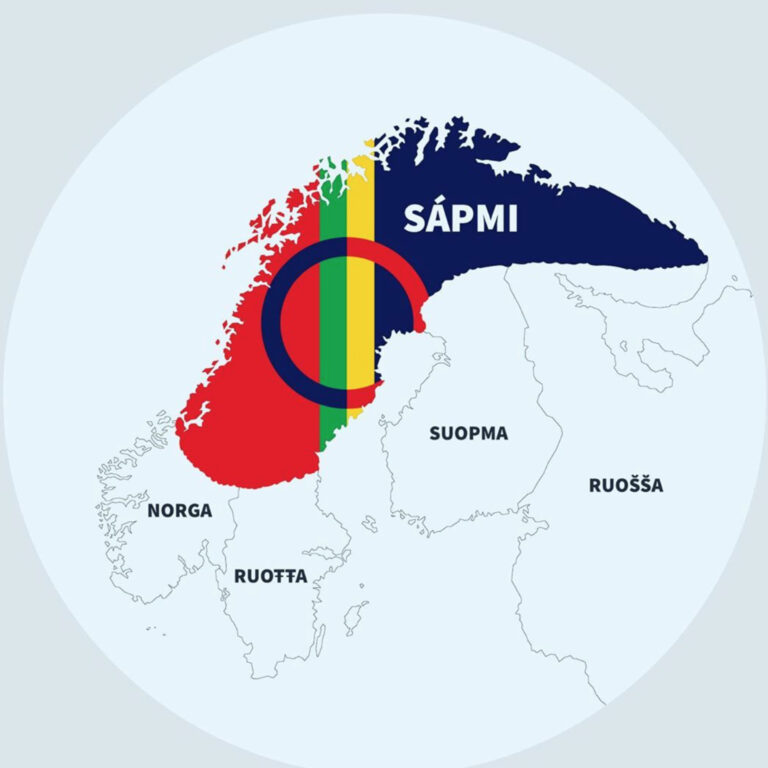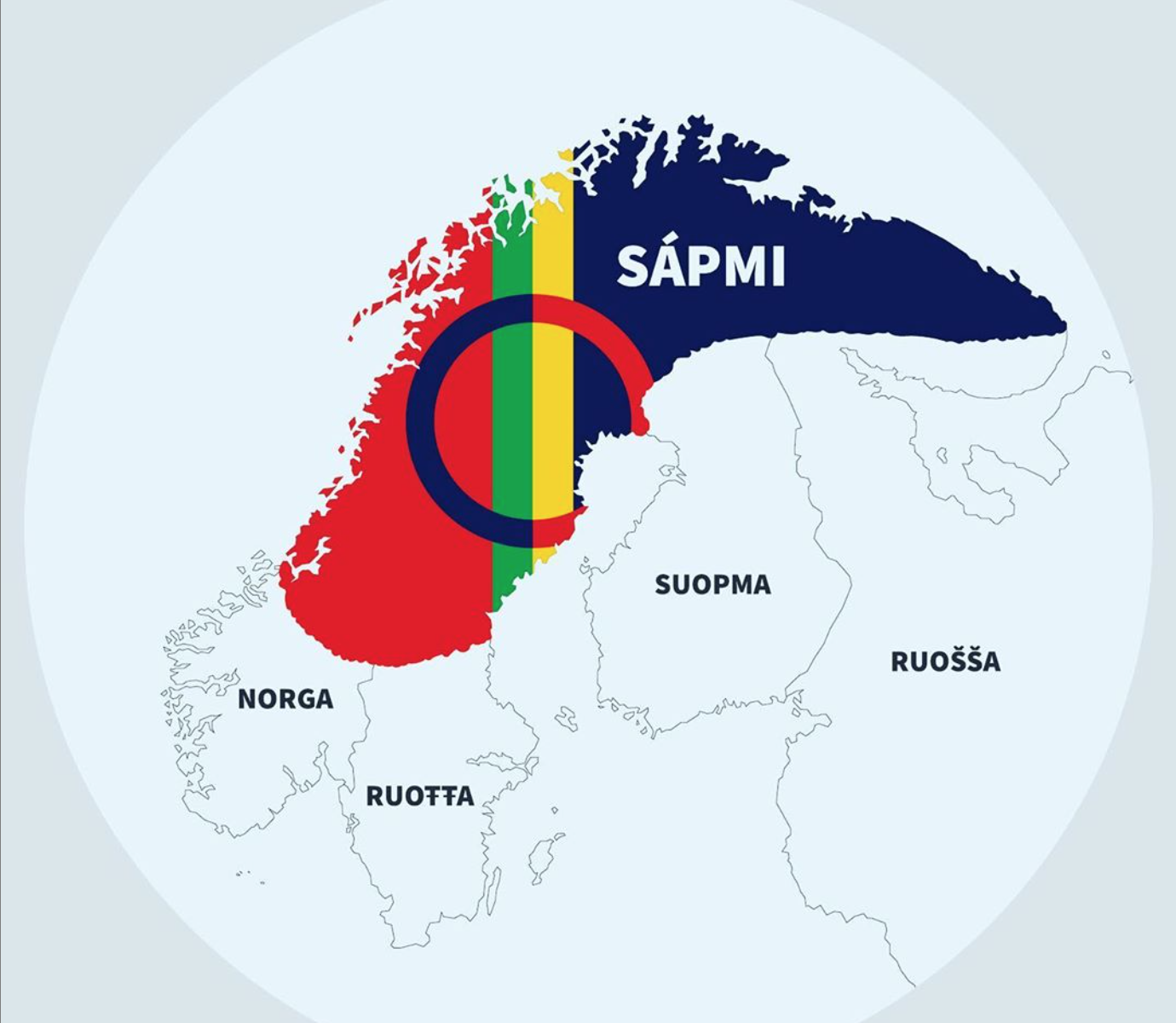01 juli 2021 | 11 minutes

Norsk for Beginners is a podcast aimed at beginners of Norwegian (A1-A2). The episodes are structured in two parts: One Norwegian speaking part and the second in English, explaining the Norwegian part and examining some Norwegian vocabulary used in the episode. I speak Norwegian in a clear, slow and deliberate manner, perfect for beginners. Get some listening practice by listening to “Norsk for Beginners”!
Email: Laernorsknaa@gmail.com
Transcript: https://laernorsknaa.com/3-10-sameland-sapmi
Support me here –>
Patreon: https://www.patreon.com/laernorsknaa
Donasjon (Paypal): Doner (paypal.com)
For more content to learn Norwegian –>
YouTube: https://www.youtube.com/channel/UCxdRJ5lW2QlUNRfff-ZoE-A
Sameland
Sameland er den kulturelle regionen som samene tradisjonelt har bodd i. På norsk heter området Sameland, mens det på nordsamisk heter Sápmi. Sameland er et område i Nord-Norge, Nord-Sverige, Nord-Finland og helt i Nord-Vest-Russland. Dette er områder samene tradisjonelt har bodd i. Samene er ett urfolk i Norge, Sverige, Finland og Russland. Urfolk er folk som er de originale innbyggerne ett sted. I USA er det den amerikanske urbefolkningen, ofte kalt for indianerepå norsk.
Sameland er det tradisjonelle og historiske området til samene. Likevel er det ikke slik at alle samene bor der. Mange samer i Norge bor i Oslo, for eksempel. I tillegg er samene ofte minoriteter innenfor Sameland. Sameland er et stort område og majoriteten som bor innenfor dem er ikke samer. Faktisk er bare 2,5 til 5% av den totale befolkningen innenfor Sameland faktisk samer. Dette er en av grunnene til at vi sier at Sameland er det tradisjonelle området til samene.
Det bor flestsamer i Norge. I Norge bor det ca. 60,000 samer. Dette er mye mer enn andre land. Sverige har nest flest samer. Det finnes omtrent 100,000 samer totalt. I Norge er de sterkeste samiske kulturområdene i Nord-Norge, spesielt i fylket Troms og Finnmark. Tradisjonelt var det mange samer som var enten fiskere eller drev med reinsdyr. I dag er det fortsatt en delsamer som driver med reinsdyr.
Områdene med sterkest samisk påvirkning er nok Karasjok og Kautokeino. Her snakker flesteparten av innbyggerne samisk og mange av de viktigste samiske institusjonene ligger i disse to kommunene. I Karasjok ligger for eksempel Sametinget. Sametinget er en folkevalgt representativ forsamlingfor samer i Norge. Sametinget representerer samene i Norge. De har som oppgave å styrke samenes politiske stilling i Norge.
I tillegg til Sametinget ligger NRK Sápmi i Karasjok. NRK Sápmi er NRK på nordsamisk. For eksempel sender de nyheter på nordsamisk som handler om samiske saker.
Kautokeino blir ofte kalt for det kulturelle hovedsenteret i de nordsamiske områdene. Det er ett av de viktigste kulturelle sentrene i Sameland for samisk kultur og språk. For eksempel har de en egen samisk filmfestival. I tillegg blir det arrangert reinkappkjøring, altså kappløp med reinsdyr.

Transcripción
Heihei! Today, we are going to talk about Sameland, the region of the Sami people. Before we do that, I just want to mention Patreon really quickly. You can support the podcast on Patreon and I really appreciate all the support.1. The transcript for the episode is available at the website. Now, let’s talk about Sameland.
Sameland
Sameland er den kulturelle regionen som samene tradisjonelt har bodd i. På norsk heter området Sameland, mens det på nordsamisk heter Sápmi. Sameland er et område i Nord-Norge, Nord-Sverige, Nord-Finland og helt i Nord-Vest-Russland. Dette er områder samene tradisjonelt har bodd i. Samene er ett urfolk i Norge, Sverige, Finland og Russland. Urfolk er folk som er de originale innbyggerne ett sted. I USA er det den amerikanske urbefolkningen, ofte kalt for indianere på norsk.
Sameland er det tradisjonelle og historiske området til samene. Likevel er det ikke slik at alle samene bor der. Mange samer i Norge bor i Oslo, for eksempel. I tillegg er samene ofte minoriteter innenfor Sameland. Sameland er et stort område og majoriteten som bor innenfor dem er ikke samer. Faktisk er bare 2,5 til 5% av den totale befolkningen innenfor Sameland faktisk samer. Dette er en av grunnene til at vi sier at Sameland er det tradisjonelle området til samene.
Det bor flest samer i Norge. I Norge bor det ca. 60,000 samer. Dette er mye mer enn andre land. Sverige har nest flest samer. Det finnes omtrent 100,000 samer totalt. I Norge er de sterkeste samiske kulturområdene i Nord-Norge, spesielt i fylket Troms og Finnmark. Tradisjonelt var det mange samer som var enten fiskere eller drev med reinsdyr. I dag er det fortsatt en del samer som driver med reinsdyr.
Områdene med sterkest samisk påvirkning er nok Karasjok og Kautokeino. Her snakker flesteparten av innbyggerne samisk og mange av de viktigste samiske institusjonene ligger i disse to kommunene. I Karasjok ligger for eksempel Sametinget. Sametinget er en folkevalgt representativ forsamling for samer i Norge. Sametinget representerer samene i Norge. De har som oppgave å styrke samenes politiske stilling i Norge.
I tillegg til Sametinget ligger NRK Sápmi i Karasjok. NRK Sápmi er NRK på nordsamisk. For eksempel sender de nyheter på nordsamisk som handler om samiske saker.
Kautokeino blir ofte kalt for det kulturelle hovedsenteret i de nordsamiske områdene. Det er ett av de viktigste kulturelle sentrene i Sameland for samisk kultur og språk. For eksempel har de en egen samisk filmfestival. I tillegg blir det arrangert reinkappkjøring, altså kappløp med reinsdyr.
Sameland er likevel ikke bare i Norge. Og i Norge er det faktisk ikke bare i Nord-Norge. Deler av Midt-Norge er også en del av Sameland. Det er et stort område med mye forskjellig. Det er det tradisjonelle området til samene, selv om situasjonen i dag er ganske annerledes. Utenom Karasjok og Kautokeino i Norge, så er samene i mindretall de aller fleste stedene i Norge.
Sápmi (English)
Sápmi, or Sameland in Norwegian, is the traditional region of the Sami people. It lies in the North of Norway, Sweden and Finland, and a small part in North-Western Russia close to the border with Norway. Although we call the region for Sápmi, the Sami people are mostly a minority within the area. They only make up about 2,5 to 5% of the total population of the area. That is one of the reasons we call it for the traditional and cultural area of the Sami and not just the region of the Sami.
The Sami people are an indigenous population in northern Norway, but not all of the Sami live there. Many Sami have moved to the cities such as Oslo or Tromsø. There are about 60,000 Sami in Norway of about 100,000 Sami in total. So, the majority of Sami live in Norway, but there is also a substantial Sami population in Sweden. In Norway, the strongest cultural Sami communities lie in the administrative region Troms and Finnmark. Traditionally, many Sami were fishers or reindeer herders. Some Sami still engage in reindeer herding.
The areas with the strongest Sami influence in Norway are Karasjok and Kautokeino which lie all the way up north in Finnmark. These are some of the only places where the vast majority of the inhabitants speak Sami. Also, many of the most important Sami institutions lie within these regions. The Sami Parliament of Norway is located in Karasjok. It is an elected assembly and is responsible for furthering the political position of the Sami in Norway. In addition to the Sami Parliament, the main centre of NRK Sápmi is in Karasjok. They transmit news in northern-Sami about Sami issues.
Kautokeino is often called the cultural focal point for the northern Sami areas. It is one of the most important cultural areas in Sápmi for Sami culture and language. For instance, the Sami film festival is arranged here. Also, they arrange reindeer races.
Sápmi is a vast area located in four different countries. In Norway, this is especially in the north of the country, but also some central areas in Trøndelag. Despite its name, Sápmi, the Sami people are mostly minorities within it, except for Karasjok and Kautokeino in Norway. Nonetheless, it is an important cultural and historical region of the Sami people, the indigenous population of the area.
Vocabulary:
Mens – Whereas
Helt i… – All the way in… (literally “absolutely in…”)
Urfolk/urbefolkning – Indigenous people
Indianere – Indians
Er det ikke slik at… – It is not like…
Innenfor – Dentro de
Faktisk samer – Actually Sami (Faktisk is used for emphasis)
Grunn – Reason
Flest – Most
Omtrent – Approximately
Kulturområde – Cultural area
Reinsdyr – Reindeer
En del – Quite a few (in this context)
Å drive med – To engage with
Påvirkning – Impact/influence
Flesteparten – The majority
Folkevalgt – Elected
Forsamling – Assembly
Stilling – Standing/position
I tillegg til – In addition to
Å handle om – To be about
Sak – Issue (in this context)
Hovedsenter – Focal point
Kappløp – Race
Deler av… – Parts of…
Annerledes – Different
Utenom – Except for
Mindretall – Minority

VIKTIG rettelse:
INDIANERE er ikke et begrep som brukes av urbefolkningen i USA. Dette er riktig:
«Native American» eller «American Indian» og i Canada «First Nations» om etterkommerne etter Amerikas første beboere. Institusjoner og organisasjoner til amerikanske urfolk foretrekker også selv indigenous eller indígena.